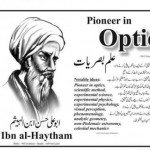- This topic has 9 replies, 7 voices, and was last updated 9 years, 6 months ago by
 devendra Kalra.
devendra Kalra.
-
AuthorPosts
-
-
March 22, 2016 at 2:39 pm #33559
 Urvi pathakParticipant
Urvi pathakParticipantHi.
Please guide me in design of 4 channel wdm with each channel has data rate of 10 gbps. In my design I am not getting proper constellation diagram. I m using power from – 15 dbm to +15 dbm.. -
March 23, 2016 at 12:00 am #33570
 aasif bashir darParticipant
aasif bashir darParticipanthi urvi pathak,
please can you upload the .osd file or the screen shot of your .osd file.with regrads
-
March 23, 2016 at 12:10 am #33573
 umer syedParticipant
umer syedParticipanthi urvi pathak,
no attachments found
with regards -
March 23, 2016 at 4:29 pm #33638
 Dr. Dhiman KakatiParticipant
Dr. Dhiman KakatiParticipantHello Urvi pathak,
for getting appropriate result you must be aware of the channel spacing and and side lobe powers (depends on modulation scheme you are using) and accordingly you have to tune the fiber central wavelength. It would must much clear if you upload here with your design then we can look for the problems that might be there in the design. Thanking you…Regards,
Dhiman -
May 6, 2016 at 10:26 am #38964
 umer ashraf waniParticipant
umer ashraf waniParticipanthttps://www.google.co.in/url?sa=t&rct=j&q=&esrc=s&source=web&cd=2&cad=rja&uact=8&ved=0ahUKEwijne_P08XMAhVD26YKHdUuDBIQFgglMAE&url=http%3A%2F%2Fwww.sciencedirect.com%2Fscience%2Farticle%2Fpii%2FS0030402611005845&usg=AFQjCNHSjyTJRViNNegkbuAPR8Dq1ycaoQ&sig2=kx7PKiGnGoy3o9NdtMyFBg
https://www.google.co.in/url?sa=t&rct=j&q=&esrc=s&source=web&cd=3&cad=rja&uact=8&ved=0ahUKEwijne_P08XMAhVD26YKHdUuDBIQFggtMAI&url=http%3A%2F%2Fieeexplore.ieee.org%2Fiel5%2F2220%2F28659%2F01283616.pdf%3Farnumber%3D1283616&usg=AFQjCNGJhxt0k0mu3ACeSCvDK2s_bku1Rg&sig2=N1-vMGSeF2klR3xDHvl8_w
https://www.google.co.in/url?sa=t&rct=j&q=&esrc=s&source=web&cd=8&cad=rja&uact=8&ved=0ahUKEwijne_P08XMAhVD26YKHdUuDBIQFghSMAc&url=http%3A%2F%2Fwww.copl.ulaval.ca%2Ffileadmin%2Fcopl%2Fdocuments%2Fdocuments%2FPublications-PDF%2FRusch%2Fconf89.pdf&usg=AFQjCNGUvMGgUk7JIBh64iAOpT3RRtzyNQ&sig2=v0_btoqd4eaRLL23UR2HMw
https://www.google.co.in/url?sa=t&rct=j&q=&esrc=s&source=web&cd=11&cad=rja&uact=8&ved=0ahUKEwiv3Irj08XMAhUIx6YKHTlcD104ChAWCBowAA&url=https%3A%2F%2Fwww.vde-verlag.de%2Fproceedings-en%2Fgs_proceeding%2F%3Fdocid%3D563042311&usg=AFQjCNEbiAaihmuTMbRvDMzkNtZIKOVIsg&sig2=dVWSA5sNGqWC71KOEG68qg&bvm=bv.121421273,d.dGY
https://www.google.co.in/url?sa=t&rct=j&q=&esrc=s&source=web&cd=14&cad=rja&uact=8&ved=0ahUKEwiv3Irj08XMAhUIx6YKHTlcD104ChAWCCwwAw&url=https%3A%2F%2Fwww.researchgate.net%2Fpublication%2F3293389_Impact_of_nonlinear_phase_noise_on_direct-detection_DQPSK_WDM_systems&usg=AFQjCNHmpm8vvCqhJW7Hi6UAVd3tnPhEEA&sig2=OKA0ECd647MiA3mqqOAg7w&bvm=bv.121421273,d.dGY -
May 6, 2016 at 1:25 pm #38971
 Karan AhujaSpectator
Karan AhujaSpectatorHello,
I want to mention that in conventional DQPSK receivers a pair of onebit delay asymmetric Mach-Zehnder interferometers (AMZI) are used: one for the in-phase (I), and one for the quadrature (Q) component. Similar to binary DPSK3, a narrow optical filter can be used instead of each AMZI 4. The frequency response the optical filters should approximate the main lobe of the frequency response of the constructive port of the AMZI. By tuning the central frequency of the filter either the I or Q component of the DQPSK signal can be demodulated. We will call such a receiver a narrow filter (NF) receiver. We experimentally demonstrate in this paper that a single arrayed waveguide grating (AWG) can be used
to simultaneously demodulate the in-phase (or quadrature) component of a comb of DQPSK signals. It can be seen how the AWG filter approximates the main lobe of the theoretical response of the AMZI. The use of AWGs for WDMDQPSK signals represents a big advantage in terms of component counts.
Hope this helps.
regards -
May 6, 2016 at 1:27 pm #38972
 Karan AhujaSpectator
Karan AhujaSpectatorI am attaching a link of one paper which mentions about the DQPSK. It also says that in the modulation and demodulation methods of the optical differential quadrature phase shift key (DQPSK) and the different modulation formats including nonreturn-to-zero (NRZ), return-to-zero (RZ), carrier-suppressed return-to-zero (CS-RZ) are introduced, studying the different optical signals in the 40 Gb/s high speed transmission system. The system is simulated in 200 km optical fiber by way of dispersion compensation. It is showed that the ability of anti-dispersion and anti-PMD (polarization mode dispersion) is better in the CS-RZ–DQPSK modulation format, and this format has the smallest eye-opening penalty (EOP) with a wider range of power into the optical fiber.
Try to refer to this paper. It will be surely of some help.
http://www.sciencedirect.com/science/article/pii/S0030402611005845
Regards -
May 6, 2016 at 1:29 pm #38973
 Karan AhujaSpectator
Karan AhujaSpectatorAlso try to go through this paper too.
https://www.researchgate.net/publication/3293389_Impact_of_nonlinear_phase_noise_on_direct-detection_DQPSK_WDM_systemsIt mentions that the performance degradation of differential quadrature phase-shift keying (DQPSK) wavelength-division-multiplexed (WDM) systems due to self-phase modulation (SPM)- and cross-phase modulation (XPM)-induced nonlinear phase noise is evaluated. The XPM-induced nonlinear phase noise is approximated as Gaussian distribution and summed together with the SPM-induced nonlinear phase noise. Here 10-Gb/s system is demonstrated, whose walk off length is larger than 40-Gb/s systems’, are more sensitive to XPM-induced nonlinear phase noise than 40-Gb/s systems. Furthermore, DQPSK WDM systems show lower tolerance to both SPM- and XPM-induced nonlinear phase noise than differential phase-shift keying WDM systems.
Hope this is what you are looking for.
Regards -
May 8, 2016 at 2:13 am #38994
 burhan num mina llahParticipant
burhan num mina llahParticipantHello Urvi,
To be able to help firstly i would suggest you to upload your osd file if possible. Secondly , can you mention the significance that why you have taken power from -15 to +15 dBm?
Regards
Burhan
-
-
AuthorPosts
- You must be logged in to reply to this topic.

